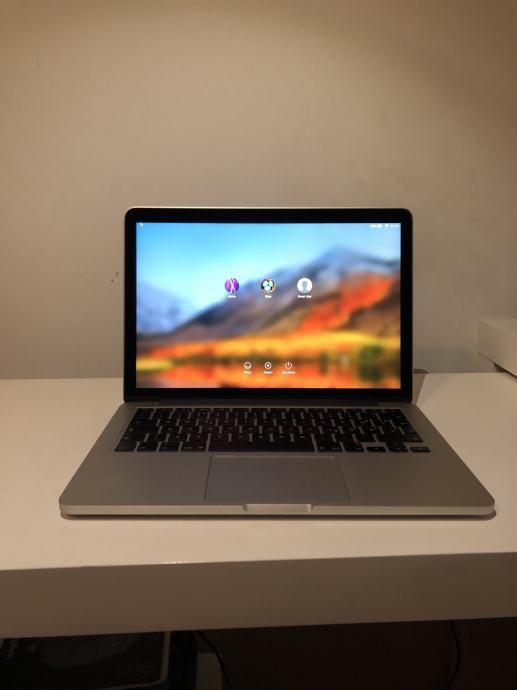

- Early 2015 macbook pro 13 serial#
- Early 2015 macbook pro 13 upgrade#
- Early 2015 macbook pro 13 windows#

In Cinebench 11.5 the new Air scored 1.18 and 2.80 points for single- and multi-core mode operation, putting it 4.4 and 8.9 percent ahead of 2014’s standard MacBook Air. That puts it 4.9 and 7.8 percent faster than the outgoing Mid-2014 model with its 1.4 GHz Haswell-generation processor (27 points). As an indication of raw processor and memory speed, the Geekbench 3 benchmark test scored the 13-inch MacBook Air with 2912 points in single-core mode, and 5821 points multi-core. We tested the standard issue MacBook Air with its 1.6 GHz Core i5 processor. As in the new Pro, these are Intel’s new fifth-gen Broadwell chips so they should be more power-efficient too – although it’s hard to get too excited about Apple managing to keep battery life at the same (admittedly excellent) level rather than improving it. The speed of the processor in the MacBook Air range (all MacBook Airs share the same processor as standard) has been bumped from 1.4 to 1.6GHz: not a huge improvement, but potentially more significant than the MacBook Pro’s increase from 2.4 to 2.6GHz because in lower-specced machines processing power is more likely to become the performance bottleneck. Highest sequential write speeds approached 700 MB/s, averaging 685 MB/s for 2-10 MB data, while sequential read speeds averaged 1512 MB/s.ġ3-inch MacBook Air (early 2015) review: processor performance & speed In our tests this allowed a two-fold increase in maximum sequential read speed over the last version, with a top speed now exceeding 1500 MB/s.įor small file transfers, we measured 4 kB random reads and writes at 36 and 87 MB/s and using data sized from 4 kB to 1024 kB we saw incredibly high averaged figures of 450 and 503 MB/s.
Early 2015 macbook pro 13 upgrade#
That 50 percent improvement was the biggest lift in storage performance since the hard disk became sidelined in favour of solid-state storage.įor the 13-inch MacBook Air, Apple has provided the same upgrade as the 13-inch MacBook Pro with Retina display, by doubling the number of PCIe data lanes from two to four. PCIe-attached flash drives allowed speeds to jump from around 500 MB/s under SATA to greater than 750 MB/s.
Early 2015 macbook pro 13 serial#
That first PCIe-attached flash drives broke records for their incredible sequential transfer speeds, no longer held back by the constriction of the ageing Serial ATA Revision 3.0 interface. The MacBook Air was the first mainstream notebook computer to take advantage of a more direct PCI Express attachment for its solid-state flash drive with the Mid-2013 model the MacBook Pro with Retina display didn’t catch up until its refresh later that year in October 2013. When it comes to storage, we find a remarkable breakthrough in storage technology. 13-inch MacBook Air (early 2015) review: storage We would guess the 1600 MHz memory was preserved for the Air for reasons of budget, both financial and battery economy.

Note that Apple has maintained the same low-power memory chips, even though Broadwell processors can take advantage of slightly faster 1867 MHz memory – an opportunity that has already been taken with the Early 2015 refresh of the 13-inch MacBook Pro with Retina display. Memory is the same as last season, with 4 GB DDR3 RAM clocked at 1600 MHz, configurable at time of purchase only to 8 GB, for an extra £80.
Early 2015 macbook pro 13 windows#
The 11-inch meanwhile remains only 50 percent faster than Windows laptops, more on this below. In short, the 13-inch notebook has a flash drive that is three times faster than the best the Windows world can deliver. There are still two screen sizes from which to choose, 11.6-inch and 13.3-inch, and following the example set by the last generation, the MacBook Air specification in every other aspect is identical between models.īut wait, is it really? In fact this time around there is an important internal difference that puts clear space between the two sizes of Air models in performance terms. Little has changed in the design of the Apple MacBook Air, launched in its current form in late 2010 with its sharper wedge-shaped unibody case, and now refreshed into its new Early 2015 form this spring. 13-inch MacBook Air (early 2015) review: Introduction And if you’re open to the idea of Air-style laptops from other companies, check our roundup of the best alternatives to the MacBook Air. MacBook Air vs MacBook Pro comparison review and read ourĬomparison review of the MacBook Air and the MacBook.


 0 kommentar(er)
0 kommentar(er)
